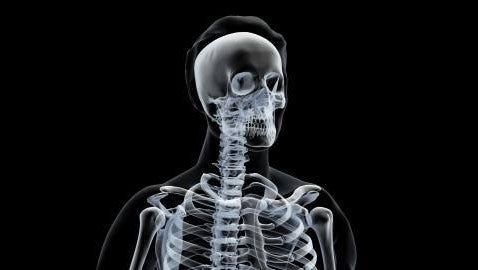

Some 3.6 billion diagnostic x-rays are made each year around the world, but there is wide disparity in radiological diagnosis rates between countries of different income levels. Many patients in low-income countries lack access to even basic forms of imaging such as ultrasound and x-rays, which alone can address 80-90% of common diseases and conditions.
Washington, D.C., 8 November 2013 (PAHO/WHO) — Some 3.6 billion diagnostic x-rays are made each year around the world, but there is wide disparity in radiological diagnosis rates between countries of different income levels. Many patients in low-income countries lack access to even basic forms of imaging such as ultrasound and x-rays, which alone can address 80-90% of common diseases and conditions.
Experts participating in a special panel discussion organized by the Pan American Health Organization (PAHO) for World Radiology Day, Nov. 8, said many countries in the Americas face major challenges in ensuring sufficient and high-quality radiology services and their effective and rational use.
"In Latin America and the Caribbean, countries at an intermediate level of health care development perform some 400 radiological studies per 1,000 population annually, while the rates of studies for those countries with lower levels of health care development remain unchanged at 30 per 1,000 population," said PAHO Deputy Director Jon K. Andrus. "In the industrialized countries the figure is 1,700 studies per 1,000 population. This represents a greater than 50 fold difference between rich and poor countries. That is just unacceptable."
Radiology services play a central role in many areas of health care, from maternal-child health to infectious and noncommunicable diseases. Mammography, for example, is critical for early detection and diagnosis of breast cancer. Yet available data on mammography in Latin America and the Caribbean show generally low rates of coverage.
Other examples of the uses of radiology services include:
- Ultrasound technology is highly effective for diagnosing fetal growth restriction, placenta previa, multiple gestations, obstructed labor and congenital anomalies, as well as a number of tropical diseases and pathological conditions commonly found in low-income countries.
- Radiographic analysis is an important tool in diagnosing severe pneumonia, as it can differentiate between bacterial and viral etiologies and determine whether complications are present.
- Chest radiography is highly effective for screening and diagnosis of pulmonary tuberculosis.
- Radiological services are critical for diagnosis and treatment of cancer, cardiovascular disease and other noncommunicable diseases, which affect some 200 million people in the Americas.
Experts in the panel discussion said main challenges facing radiology services in the Americas included not only inadequate numbers of devices but also insufficient numbers of skilled human resources in this area, lack of training and certification, and inadequate career opportunities and resulting "brain drain." Panelists called for stronger national policies and necessary investments to address these issues.
"On World Radiology Day, we are calling on countries to strive for wider access to radiology services for their populations, and we're encouraging health professionals, authorities and experts to work together to promote the proper and efficient use of these technologies to improve the health of all people in the Americas," said Pablo Jiménez, Regional Advisor in Radiological Health.
Participants in the World Radiology Day panel discussion included Adriana Velazquez, coordinator of the World Health Organization's (WHO) Diagnostic Imaging and Medical Device Unit; Daniel Mollura, CEO, RAD-AID International; Gloria Soto, president of the Inter-American College of Radiology (ICR); Ria Eyer, vice-president of the Americas for the International Society of Radiographers and Radiological Technologists (ISRRT); Donald Miller, chief medical officer for radiological health of the U.S. Food and Drug Administration (FDA); Simone Kodlulovich, president of the Latin American Association of Medical Physicists (ALFIM); Bradley Short, of the American College of Radiology; John Vanden Brink, Rotary Club of Park Ridge, Illlinois; Leigh Giles-Brouwn, of Howard Community College, Maryland; and James Fitzgerald, interim director of PAHO's Health Systems and Services Department.
PAHO and partner organizations including the Inter-American College of Radiology (ICR), the Latin American Association of Medical Physics (ALFIM), the International Society of Radiographers and Radiological Technologists (ISRRT), the International Atomic Energy Agency (IAEA), RAD-AID International and Rotary International are providing radiology units and guidance and developing human resources to improve radiology services in PAHO member countries in Latin America and the Caribbean.
LINKS:
CONTACTS:
Donna Eberwine-Villagran, eberwind@paho.org, Tel. +1 202 974 3122, Mobile +1 202 316 5469 or Leticia Linn, linnl@paho.org, Tel. + 202 974 3440, Mobile +1 202 701 4005 Knowledge Management and Communication, OPS/OMS.



